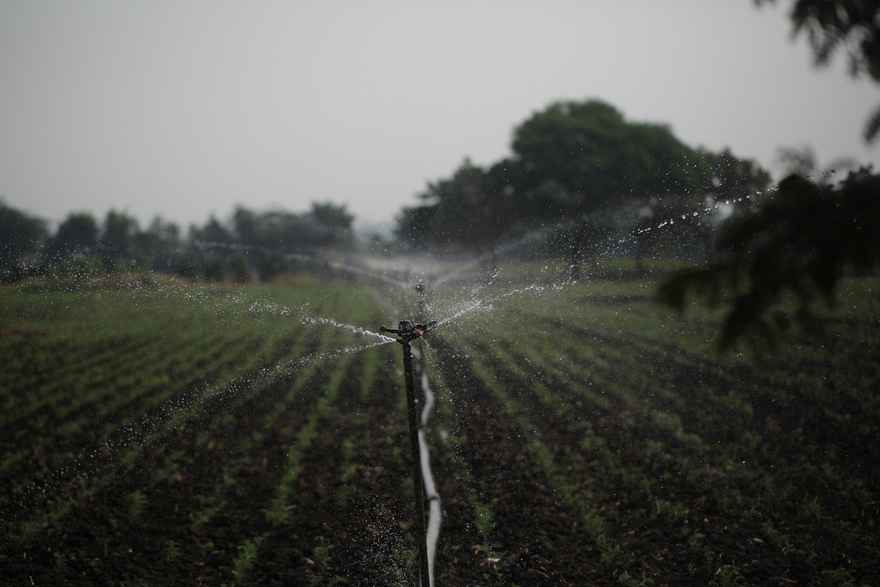Do you know where your water comes from and how it is treated?

Excerpt from the Ecological Design Dimension from our "Design for Sustainability and Regeneration" course
If you would like to learn more and acquire the skills to become an ecological design, then join the Ecological Design course.
The Ecological Design dimension of the Design for Sustainability programme will start on 09 January 2022 and there are still spaces left, so sign up now!
When we understand how the water cycle works, the next step into designing appropriate water systems should be to take a close look at the water budget for the building, community and bioregion. Even if you are only designing a single house in your community, to integrate your design appropriately into its landscape you will have to pay attention to water flows at the community and regional scale.
Here is a link to more information about creating a water budget.
In this enjoyable and excellent talk on rethinking and retrofitting for resilience, Brock Dolman, the director of the Water Institute at the Occidental Arts and Ecology Centre, shares how we can all become part in creating appropriate water use patterns through practising ecologically regenerative watershed management. His mantra for water management is: Slow it! Spread it! Sink it!
Brock also emphasises the whole-systems ecological approach to dealing with climate change. We have polluted and degraded the biosphere to the extent that climate-change phenomena can clearly be seen to be the symptoms of stressed planetary systems trying to deal with the excess heat, trying to rebalance and return to the dynamic equilibrium of the Holocene. We can enable the Earth to do its work of regeneration when we see ourselves and our communities as part of the bigger picture, starting with our watershed.
Compacted agricultural fields with no permanent ground cover, no hedgerows and trees stop rainfall from filtering into the ground and washing away soil with runoff. In cities, rainwater is regarded as a problem and channeled away as quickly as possible through the sewerage system. Impermeable surfaces reduce water filtration into the ground and add to pollution of water as runoff picks up the heavy metal residues left by fossil fuel exhausts. In many places rain falls in seasons, yet rainwater is not retained and stored in the landscape but is allowed to rush off to rivers and back into the sea. For sustainable watershed management at local and regional scale, we need water to be retained for use throughout the year. Instead of piping wastewater long distances for centralized treatment, we could regenerate water quality locally in smaller, more decentralized and resilient waste management systems. We should minimize pollution and recycle water locally. Hydro-electric plants, especially mega-dams, cause considerable damage to riverine ecosystems and in some countries, dams are already being dismantled as part of watershed restoration projects.
The diagram below shows a schematic watershed with a river and its tributaries rising in the hills around it. The contours of the hills have been added. When the hillsides are bare of vegetation, the water will run downhill as quickly as possible, following the path of least resistance, taking soil with it and causing erosion.

The regenerative approach is to store rainfall in the landscape through ecosystem restoration including major reforestation on the uplands to capture rainfall through infiltration and to facilitate evapo-transpiration and bio-aerosols. Other ecosystem restoration strategies could include the re-introduction or protection of animals that play a key role in watershed restoration, the so-called keystone species. Beavers are natural dam-builders; they slow down the flow of water allowing it to infiltrate and streams to meander. This alone has a rapid and positive feedback effect on other species that steadily increase the resilience of the freshwater and riparian ecosystems. In some places specialized ungulates (hoofed animals) are part of a restoration project, in others, the numbers of animals should be reduced through the re-introduction of top predators such as wolves. This is where watershed restoration and rewilding join forces. Techniques for watershed restoration are also reliant on local geology.

This gravel-bed floodplain in a mountain region contains wildlife ranging from the smallest microbes to the top herbivores and carnivores. Source: https://www.researchgate.net/figure/The-gravel-bed-river-floodplain-as-the-ecological-nexus-of-regional-biodiversity_fig3_304462893
Of course, in densely populated areas watersheds accommodate human settlements on a variety of scales from mega-cities, usually on the coast, to smaller towns and cities along the major arteries of the river and smaller communities in rural areas. Industry, agriculture and cash-crop forestry are all major exploiters of watersheds. Population growth, economic growth and the export imperative can compromise watershed integrity.
How would the watershed in this diagram below stand up to scrutiny? Can you think of ways to improve it as a ‘water retention landscape’?




0 comments
Leave a comment